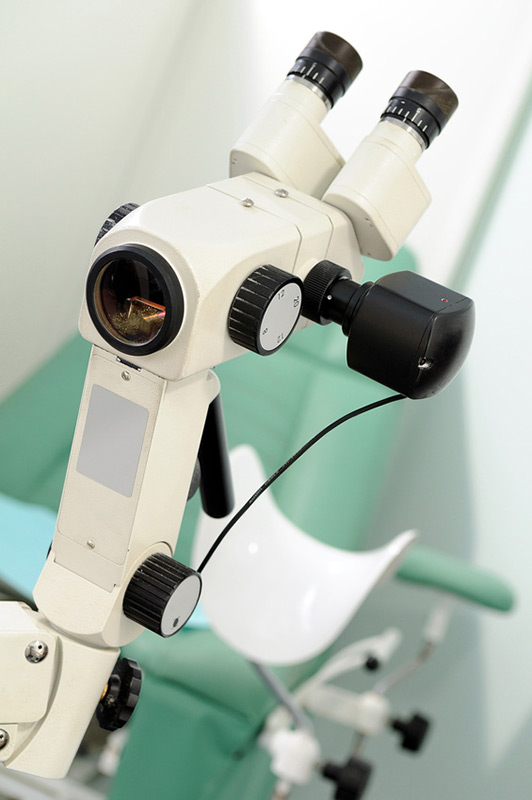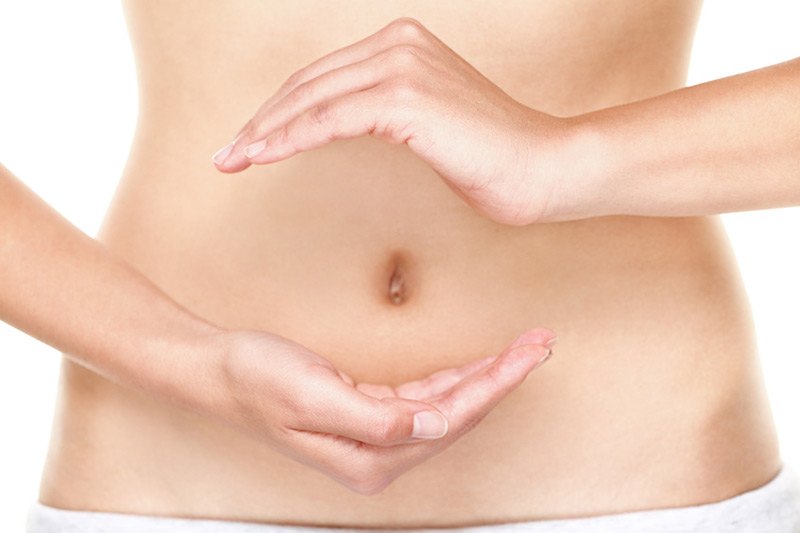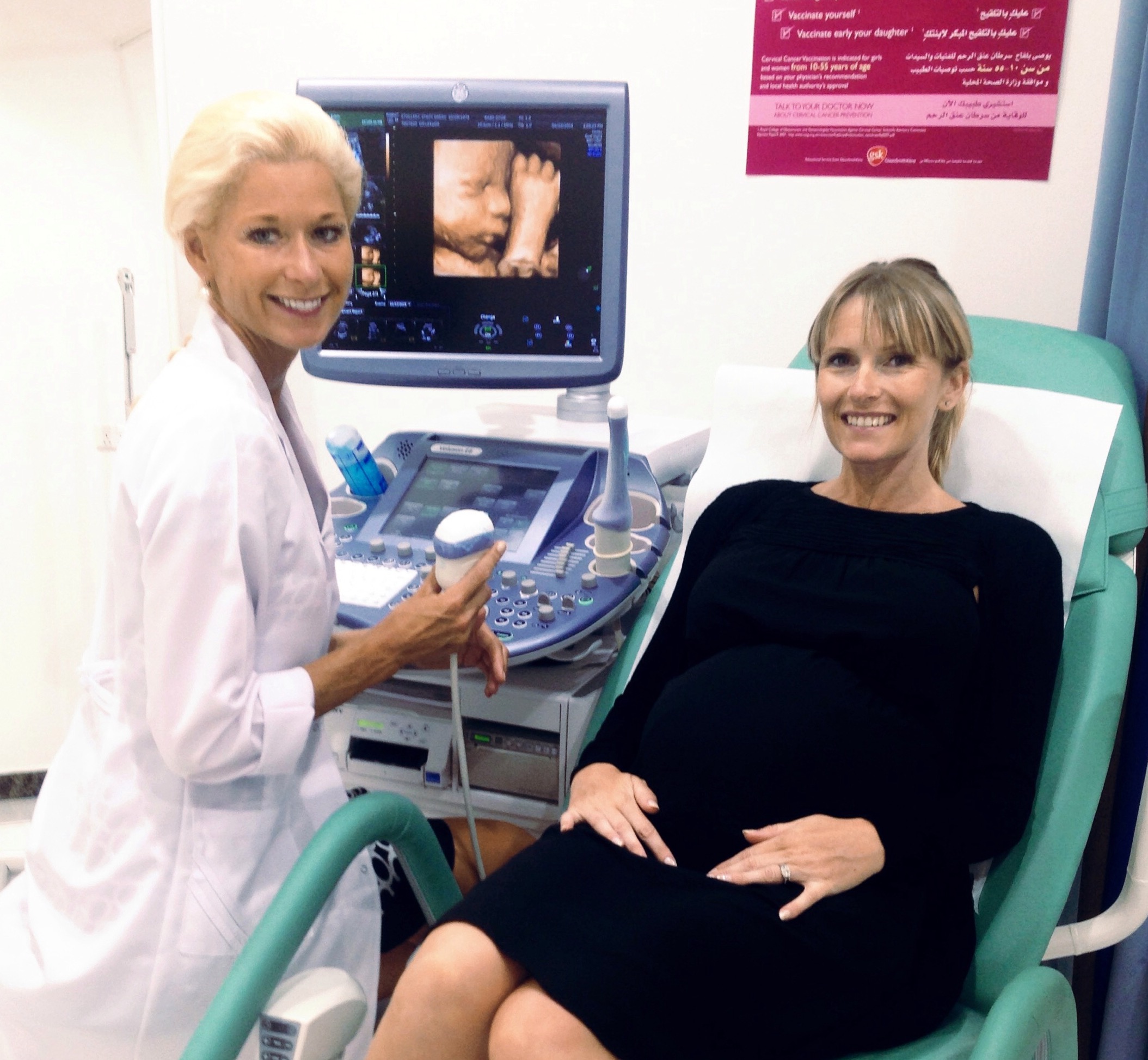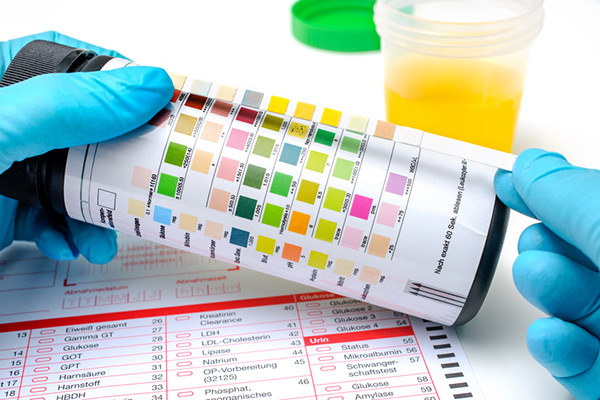 PAP Smear (Cytology)
Screening examinations on cervical cancer and its precursor lesions are part of the routine check up with your gynecologist doctor. A PAP smear is a special swab collected from the surface of the lowest part of the uterus, the cervix. The sample can easily be collected in a vaginal exam and will be send for cytological assessment and microscopy to a special lab. The sample is being taken with a special thin prep cyto brush that collects cells from the surface of the cervix (portio) as well as from the cervical channel. Therefore cells of the area of interest, the so called transformation zone, can be examined in one test, the liquid based cytology testing.Cells will be classified as normal or may show minor or major cell changes. The results of the test will be discussed profoundly with your doctor, who will explain and interprete the results and might discuss further investigations options if necessary. Changes in the cervical cells may be due to an infection only or can idicate early intraepithelial neoplasia. In case of doubt, a colposcopy with biopsy can be advisable.
PAP Smear (Cytology)
Screening examinations on cervical cancer and its precursor lesions are part of the routine check up with your gynecologist doctor. A PAP smear is a special swab collected from the surface of the lowest part of the uterus, the cervix. The sample can easily be collected in a vaginal exam and will be send for cytological assessment and microscopy to a special lab. The sample is being taken with a special thin prep cyto brush that collects cells from the surface of the cervix (portio) as well as from the cervical channel. Therefore cells of the area of interest, the so called transformation zone, can be examined in one test, the liquid based cytology testing.Cells will be classified as normal or may show minor or major cell changes. The results of the test will be discussed profoundly with your doctor, who will explain and interprete the results and might discuss further investigations options if necessary. Changes in the cervical cells may be due to an infection only or can idicate early intraepithelial neoplasia. In case of doubt, a colposcopy with biopsy can be advisable.
Colposcopy and Biopsy (Histopathology)
Colposcopy is a further, more in-depth diagnostic option to assess cervical cells. Colposcopy can be performed in the outpatient clinic setting and does not require admission to hospital.It is advisable to perform colposcopy and biopsy in recurrent abnormal or suspicious PAP smear findings to rule out any major cell changes, intraepithelial lesions or malignancies in the deeper tissue layers. In colposcopy, the surface of the cervix (portio) is inspected with a video microscope magnifying the area of interest. By applying test solutions cell changes can be vizualized and suspicious lesions can be identified. Tiny tissue biopsies can be collected from these areas and send for further histopathological assessment. In comparison to the routine PAP smear, deeper tissue layers can be examined to rule out invasive intraepithelial changes. The results from histopathology assessment will be discussed with the patient by the gynecologist.
What is HPV and what is an HPV screening test?
HPV means Human Papilloma Virus. HPV is a group of human virus types that can affect skin and mucous membranes.HPV types are the most common skin-to-skin contact transmissed virus types worldwide.More than 150 subtypes are known and can be detected. So-called low risk virus types are commonly causing genital warts (condyloma). High risk virus types can lead to abnormal cell chances and malignant cervical lesions in a chronic infection. An HPV screening test can be performed together with a PAP smear test in one examination setting. The sample is collected from the surface of the cervix (portio) just like in a PAP smear testing.
How to protect from an HPV infection?
Best way to protect from HPV affection is not to get in touch with HPV.Once there is an HPV contact, depending on a persons individual immune response and local immune competence, it may lead to an infection. HPV infection commonly does not show any symptoms or cause complaints. In up to 90% of the cases, this is a self-limiting infection resolving within two years of time by itself. Still in 10% of the cases women stay chronically infected and may therefore develop abnormal intraepithelial cervical leasions over time. The risk of an HPV affection and infection can be decreased but not 100% eliminated by protecting oneself.
HPV Vaccination
An additional option of primary prevention is an HPV vaccination against the high risk subtypes HPV type 16 and HPV type 18. About 70% of all cervical cancer lesions are caused by these two virus types. With the option of a targeted HPV vaccination, this risk can effectivly be minimalized. The greatest benefit of an HPV vaccination can be obtained by applying a first vaccination loading dose and its consecutive follow up boosting doses prior to onset of sexual activity in teenagers.Vaccination is recommended to both, girls and boys. The antibodies build up as an immune response to vaccination can thereafter protect from virus invasion into the skin and body mucous membranes and prevent from a chronic virus infection.
Two vaccines are available and they do both target HPV high risk virus types HPV 16 and HPV 18.Vaccination does not cover all high risk HPV subtypes known. A yearly check up and regular PAP smear testings therefore remains crucial for women.Still, experiences with vaccinating women against HPV 16 and HPV 18 over the past years has shown, that vaccination may also be beneficial and protective against other potentially oncogenic virus types in addition. This so-called cross-protection can be explained by similarities in virus surface structure and mode of action, that allows immune response cells identify and attack several virus types.One of the two vaccines available additionally prevents from infection with HPV low risk types HPV 6 and HPV 11, known to be causing non-malignant genital warts.Both vaccines itself do not contain any oncogenic or cancerous changes causing ingredients. Risks and side effects of a vaccination are comparable with those of other well established recommended vaccinations in childhood and teenager years.
Vaccination is a highly recommended option of primary prevention in teenagers, both boys and girls.Also women in her fertile ages exceeding this main target group can profit from a boost in their local immune response and should ask their gynecologist for more information and an individualized consultation. Still, a regular check up and PAP smear remains crucial in all women.
 A check up visit with the gynecologist should ideally be a combination of consultation, medical history taking and tests individually required. This may include a physical pelvic examination with palpation and ultrasound of the pelvic organs. In this investigation, the size,positioning and relation to surrounding organs of uterus and overies can be examined. If pelvic organs seem enlarged in palpation or shifted to an abnormal position, ultrasound investigation can provide further information and a Doppler ultrasound may be added. In a positiv family history for cancerous diseases in uterus or ovaries, the combined palpation and transvaginal ultrasound examination is recommended on a regular basis.
A check up visit with the gynecologist should ideally be a combination of consultation, medical history taking and tests individually required. This may include a physical pelvic examination with palpation and ultrasound of the pelvic organs. In this investigation, the size,positioning and relation to surrounding organs of uterus and overies can be examined. If pelvic organs seem enlarged in palpation or shifted to an abnormal position, ultrasound investigation can provide further information and a Doppler ultrasound may be added. In a positiv family history for cancerous diseases in uterus or ovaries, the combined palpation and transvaginal ultrasound examination is recommended on a regular basis.
 As part of the Check up with your ladies doctor, the female breast is examined in systematical approach. This involves inspectation and palpation to check for skin changes, lumpy areas, nodules, tenderness or abnormal nipple discharge. The breast bilateral as well as axillary tales bilateral are examined.One part of the exam should also include instructing the patient in regular self-examination because newly recognized lumps and nodules in the breast are a reasonable cause for many women to be highly alerted. Self-detected, when showering or applying body lotion, lumps and nodules, as well as painful swellings in the breast give rise to concerns.Good to know, that in fact most of the findings in women’s breast are of benign, meaning non-malignant, non-cancerous origin. They may show up according to menstrual cycle, predominantly prior to onset of menstrual bleeding, while bleeding or mid-cycle near ovulation time. Nevertheless, uncertain suspicious findings all need to be thoroughly looked at.An ultrasound of the breast can be performed and further imaging such as mammography or breast MRI can be added if necessary.In case of a positive family history regarding malignant cancerous or pre-cancerous breast diseases in close relatives, normal check up visits with your doctor should be adjusted in frequency and intensity.
As part of the Check up with your ladies doctor, the female breast is examined in systematical approach. This involves inspectation and palpation to check for skin changes, lumpy areas, nodules, tenderness or abnormal nipple discharge. The breast bilateral as well as axillary tales bilateral are examined.One part of the exam should also include instructing the patient in regular self-examination because newly recognized lumps and nodules in the breast are a reasonable cause for many women to be highly alerted. Self-detected, when showering or applying body lotion, lumps and nodules, as well as painful swellings in the breast give rise to concerns.Good to know, that in fact most of the findings in women’s breast are of benign, meaning non-malignant, non-cancerous origin. They may show up according to menstrual cycle, predominantly prior to onset of menstrual bleeding, while bleeding or mid-cycle near ovulation time. Nevertheless, uncertain suspicious findings all need to be thoroughly looked at.An ultrasound of the breast can be performed and further imaging such as mammography or breast MRI can be added if necessary.In case of a positive family history regarding malignant cancerous or pre-cancerous breast diseases in close relatives, normal check up visits with your doctor should be adjusted in frequency and intensity.
Infections of the vulva and vagina can be bothersome, causing discomfort and irritating complaints or discharge. For further investigations on nature and cause of infection, a pH value testing can be performed in a gynecological examination.
What is a pH value and why is it important?
The pH-value determines, if a tissue environment or liquid based environment is acid or alkaline. The normal healthy vaginal flora of a women in her fertile ages is supposed to be acid, with an average pH value of 3,8-4,4. Responsible for this physiological acid environment are lactobacilli and their production of lactose as part of their metabolism. Lactobacilli are bacteria that form the normal vaginal flora and help protecting from colonization of the vagina by fungal organism or pathological bacteria. They are part of a healthy flora and prevent from infections.Is there a lack of protective lactobacilli, vaginal pH value shifts from acicity to alkalinity, and therefore allows other microorganisms to colonize, overgrow and invade easily.Life events that can result in reduced acicity and lead to a predisposition for vaginal infections are most commonly use of antibiotocs, excessive hygine, vaginal washings, bleeding disorders, hormone imbalance and recreational water illnesses after visiting public swimming pools, steambath sauna, jacousis.
In case of newly upcoming symptoms, a visit with your doctor is highly recommend instead of any sort of self-treatment. A falsly picked antifungal or antibacterial self-medication without proper investigation on the cause of symproms may aggravate complaints or can promote recurrent or chronic infections. Your doctor will help you determine cause and origin of your complaints and therefore find a targeted therapy in order to treat effectively.
 What is HPV and what is an HPV screening test?
What is HPV and what is an HPV screening test?
HPV means Human Papilloma Virus. HPV is a group of human virus types that can affect skin and mucous membranes. HPV types are the most common skin-to-skin contact transmissed virus types worldwide. More than 150 subtypes are known and can be detected. So-called low risk virus types are commonly causing genital warts (condyloma). High risk virus types can lead to abnormal cell chances and malignant cervical lesions in a chronic infection with these subtypes. An HPV screening test can be performed together with a PAP smear test in one examination setting. The sample is collected from the surface of the cervix (portio) just like in a PAP smear testing.
How to protect from an HPV infection?
Best way to protect from HPV affection is not to get in touch with HPV.Once there is an HPV contact, depending on a persons individual immune response and local immune competence, it may lead to an infection. HPV infection commonly does not show any symptoms or cause complaints. In up to 90% of the cases, this is a self-limiting infection resolving within two years of time by itself. Still in 10% of the cases women stay chronically infected and may therefore develop abnormal intraepithelial cervical leasions over time. The risk of an HPV affection and infection can be decreased but not 100% eliminated by protecting oneself.
HPV Vaccination
An additional option of primary prevention is an HPV vaccination against the high risk subtypes HPV type 16 and HPV type 18. About 70% of all cervical cancer lesions are caused by these two virus types. With the option of a targeted HPV vaccination, this risk can effectivly be minimalized. The greatest benefit of an HPV vaccination can be obtained by applying a first vaccination loading dose and its consecutive follow up boosting doses prior to onset of sexual activity in teenagers.Vaccination is recommended to both, girls and boys. The antibodies build up as an immune response to vaccination can thereafter protect from virus invasion into the skin and body mucous membranes and prevent from a chronic virus infection.
Two vaccines are available and they do both target HPV high risk virus types HPV 16 and HPV 18. Vaccination does not cover all high risk HPV subtypes known. A yearly check up and regular PAP smear testings therefore remains crucial for women. Still, experiences with vaccinating women against HPV 16 and HPV 18 over the past years has shown, that vaccination may also be beneficial and protective against other potentially oncogenic virus types in addition. This so-called cross-protection can be explained by similarities in virus surface structure and mode of action, that allows immune response cells identify and attack several virus types.One of the two vaccines available additionally prevents from infection with HPV low risk types HPV 6 and HPV 11, known to be causing non-malignant genital warts.Both vaccines itself do not contain any oncogenic or cancerous changes causing ingredients. Risks and side effects of a vaccination are comparable with those of other well established recommended vaccinations in childhood and teenager years.
Vaccination is a highly recommended option of primary prevention in teenagers, both boys and girls. Also women in her fertile ages exceeding this main target group can profit from a boost in their local immune response and should ask their gynecologist for more information and an individualized consultation. Still, a regular check up and PAP smear remains crucial in all women.
Infections of the urinary bladder and urinary tract system (UTI) are a very commonly seen and often recurrent bothersome complaint in female patients. Symptoms presented may include frequent micturation, painfull micturation, burning sensations, abdominal cramps.Part of investigation is a medical history taking on known diseases, such as diabetes, medication intake, nutrition, physical activity and work-life-balance. Not all clinical UTI are of bacterial origin and cause. Some sterile inflammations don't show bacterial growth in urine culture and therfore will not improve by treatment with antibiotics. A self-treatment is therefore not recommended since it is a non targeted approach that may even aggravate symptoms and promote chronic or recurrent inflammation. Also the intake of antibiotics can lead to resistancy in bacteria and therefore carries a high risk of promoting multi-resistent bacteria overgrow. In case of an infection with a multi resistent germ, treatment becomes difficult and may lead to a chronic colonization of the urinary tract system that causes recurrent or chronic endogene infections. A main objective therefore should always be strengthening local immune response rather than starting with antibiotics instantly before testings on urine culture and sensitivity allow a more targeted therapy.
 High frequency ultrasound allows examination of the female pelvis organs such as uterus, ovaries and urinary bladder. Ovarian tissue changes and ovarian cysts can be vizualized and evaluated in size and structure. Some cysts may appear normal and non-suspicous, in more complexe cysts a doppler ultrasound may be added to investigate echo pattern more in detail. In women wishing to conceive, transvaginal ultrasound can evaluate ovarian follicle maturation, follicle count and detect if ovulation is likely. Ultrasound is used to investigate ovarian function and ovarian reserve.A hormone testing can be added. Regular follicle monitoring with ultrasound can help determine a womens individual menstrual cycle rhythm and find the optimum momentum for cycle related intimicy with the partner and/or for ovulation induction.Also size, position and structure of uterus, uterine cavity, fallopian tubes can be examined by transvaginal ultrasound. In women experiencing bleeding disorders, such as heavy bleeding or irregular bleedings, ultrasound examination of the endometrium lining, the mucous membrane covering the uterine cavity, can be evaluated in its thickness and echo pattern to rule out adenomyosis (inner genital endometriosis) or uterine polyps. Structure and appearence of the uterine walls can be examined to rule out uterine fibroids ( benign muscle tumors) leading to bleeding disorders or recurrent lower abdominal pain. Ultrasound in gynecology examination can be performed transvaganally or abdominal. Depending on the complaints presented by a women, your doctor will decide which diagnostic will be most advisable to investigate the area of interest.Kidneys, urinary bladder, uterus, fallopian tubes and ovaries are accessable to ultrasound imaging.In Pregnancy care taking, high frequency ultrasound in a regular aspect of routine check up's. Also the female breast can be examined by ultrasound.
High frequency ultrasound allows examination of the female pelvis organs such as uterus, ovaries and urinary bladder. Ovarian tissue changes and ovarian cysts can be vizualized and evaluated in size and structure. Some cysts may appear normal and non-suspicous, in more complexe cysts a doppler ultrasound may be added to investigate echo pattern more in detail. In women wishing to conceive, transvaginal ultrasound can evaluate ovarian follicle maturation, follicle count and detect if ovulation is likely. Ultrasound is used to investigate ovarian function and ovarian reserve.A hormone testing can be added. Regular follicle monitoring with ultrasound can help determine a womens individual menstrual cycle rhythm and find the optimum momentum for cycle related intimicy with the partner and/or for ovulation induction.Also size, position and structure of uterus, uterine cavity, fallopian tubes can be examined by transvaginal ultrasound. In women experiencing bleeding disorders, such as heavy bleeding or irregular bleedings, ultrasound examination of the endometrium lining, the mucous membrane covering the uterine cavity, can be evaluated in its thickness and echo pattern to rule out adenomyosis (inner genital endometriosis) or uterine polyps. Structure and appearence of the uterine walls can be examined to rule out uterine fibroids ( benign muscle tumors) leading to bleeding disorders or recurrent lower abdominal pain. Ultrasound in gynecology examination can be performed transvaganally or abdominal. Depending on the complaints presented by a women, your doctor will decide which diagnostic will be most advisable to investigate the area of interest.Kidneys, urinary bladder, uterus, fallopian tubes and ovaries are accessable to ultrasound imaging.In Pregnancy care taking, high frequency ultrasound in a regular aspect of routine check up's. Also the female breast can be examined by ultrasound.
 Consultation on contraception includes education on different methods of contraception available. Different modes of action in oral contraceptive pills (OCP) in comparison to barrier methods, intrauterine devices (IUD) and injectables should be highlighted in comparison. Also the difference between the copper coil IUD and the hormone releasing intra uterine system (IUS) can be explained to interested patients.Finding the most reliable, convenient contraception for every women needs to be determined individually, taking into consideration, if there are diseases known in a patient or if there is a certain predisposition for side effects that may limit the range of advisable products. And it needs to meet a womens individual needs. There is no one-fits-all recommondation and different patients may have different expactations on what they want to be covered and provided by her contraceptive method, depending on a womens´ age, her reproductive ambitions (family planning completed or not), predisposition for skin problems, hair loss, weight gain, water retention, obesity, diabetes, varicosis and more. Also her life-style should be taken into consideration. Is a patient a smoker, is she physically active and excercising regulary, does she take any other medication? Also expenses on a contraceptive method may play a critical role. These often asked questions shoul be discussed with your doctor. If an IUD insertion is wished, insertion/extraction of an IUD can be performed in an outpatient setting at the same time.
Consultation on contraception includes education on different methods of contraception available. Different modes of action in oral contraceptive pills (OCP) in comparison to barrier methods, intrauterine devices (IUD) and injectables should be highlighted in comparison. Also the difference between the copper coil IUD and the hormone releasing intra uterine system (IUS) can be explained to interested patients.Finding the most reliable, convenient contraception for every women needs to be determined individually, taking into consideration, if there are diseases known in a patient or if there is a certain predisposition for side effects that may limit the range of advisable products. And it needs to meet a womens individual needs. There is no one-fits-all recommondation and different patients may have different expactations on what they want to be covered and provided by her contraceptive method, depending on a womens´ age, her reproductive ambitions (family planning completed or not), predisposition for skin problems, hair loss, weight gain, water retention, obesity, diabetes, varicosis and more. Also her life-style should be taken into consideration. Is a patient a smoker, is she physically active and excercising regulary, does she take any other medication? Also expenses on a contraceptive method may play a critical role. These often asked questions shoul be discussed with your doctor. If an IUD insertion is wished, insertion/extraction of an IUD can be performed in an outpatient setting at the same time.
 Disorders and bothersome complaints during a women`s perimenopausal period or climax can affect women by irregular bleedings, alternating heavy bleeding or spotting only, skin changes, hair loss, mood swings, hot flushes, retention of water, weight gain, sleeping disorders and many more symtons that may vary remarkably over time and interindividually. Symptoms your best friend or sister suffers from may not affect your wellbeing and vice versa.A lot of women experience quite bothersome changes and irritating imbalance in their daily life quality, efficiency, stress susceptibility and in their physical, mental and spiritual wellbeeing. A doctors consultation should include the entire variability of treatment approaches and life style modifications including hormone replacement therapy, homeopathy, phytotherapy, pysical activity and moderate fitness, nutrition, relaxation and stress relief methods and verbal intervention techniques. Once again, there is no one-fits-all concept and every successful treatment regimen needs to be individually tailored to meet a womens needs.
Disorders and bothersome complaints during a women`s perimenopausal period or climax can affect women by irregular bleedings, alternating heavy bleeding or spotting only, skin changes, hair loss, mood swings, hot flushes, retention of water, weight gain, sleeping disorders and many more symtons that may vary remarkably over time and interindividually. Symptoms your best friend or sister suffers from may not affect your wellbeing and vice versa.A lot of women experience quite bothersome changes and irritating imbalance in their daily life quality, efficiency, stress susceptibility and in their physical, mental and spiritual wellbeeing. A doctors consultation should include the entire variability of treatment approaches and life style modifications including hormone replacement therapy, homeopathy, phytotherapy, pysical activity and moderate fitness, nutrition, relaxation and stress relief methods and verbal intervention techniques. Once again, there is no one-fits-all concept and every successful treatment regimen needs to be individually tailored to meet a womens needs.
 Young teenager patients usually experience quite a turbulant phase when going through puberty. Onset of menstrual bleeding and hormone imbalance may lead to irritating new problems.Bad hair days, skin problems, feeling heavy, retaining of water in the tissue, rumbling stomach and bloated tummy that will just not fit in the favourite jeans! Digestion disorders can vary from slow metabolism and constipation to diarrhea prior to onset of menstrual bleeding. Phases of keen ravenous appetite being greedy after salts or sweets in the middle of the night or at any other most unusal time and occasion may happen as well every once in a while, apparently out of the blue. Most young women notice details and experience changes without knowing that most of their every day life issues and struggles actually origine in a women´s hormone balance. In an individual consultation, all these possible symptoms can be discussed to help young patients understand their cycle related body changes and therefore feel more comfortable and positive about this exciting new phase in life.
Young teenager patients usually experience quite a turbulant phase when going through puberty. Onset of menstrual bleeding and hormone imbalance may lead to irritating new problems.Bad hair days, skin problems, feeling heavy, retaining of water in the tissue, rumbling stomach and bloated tummy that will just not fit in the favourite jeans! Digestion disorders can vary from slow metabolism and constipation to diarrhea prior to onset of menstrual bleeding. Phases of keen ravenous appetite being greedy after salts or sweets in the middle of the night or at any other most unusal time and occasion may happen as well every once in a while, apparently out of the blue. Most young women notice details and experience changes without knowing that most of their every day life issues and struggles actually origine in a women´s hormone balance. In an individual consultation, all these possible symptoms can be discussed to help young patients understand their cycle related body changes and therefore feel more comfortable and positive about this exciting new phase in life.
Menstruation, commonly known as "periods" is a normal biological process where blood is discharged from the mucous tissue in the uterus indicating a womens fertile years starting with menarche (beginning of menstrual cycles) to menopause. The mechanism of menstruation is controlled and triggered by female hormones. Their fluctuation or imbalance can disrupt the natural cycle rhythm in terms of timing or amount of bleeding at some point during the menstrual cycle. Irregularities can present in form of a missing or delayed period, a break through bleeding , heavy bleeding with clotting (Menorrhagia) or only very little, scanty bleeding (Oligomenorrhea). Causing factors include hormonal imbalance due to thyroid disorders, intake of medication, obesity, eating disorders, over-exercise and excessive sports, anatomic abnormalities in the genital organs, poly-cystic ovarian syndrome (PCOS), breastfeeding, increased stress or malbsorbtion disorders. Complaints presented may vary from abdominal pain and cramping, bloated abdomen, dizziness and blood pressure disorders. Any bleeding disorders and irregular menstruation should be investigated if leading to complaints, pain, loss of energy or if interfering with a women`s reproductive plans and goals. The treatment is based on the cause, why a visit with your gynecologist is always advisable.
 Part of consulting couples in pro-conceptive life-style modification is a detailed medical history taking in both partners. Reasons for relative subfertility (reduced chance of conceiving sponateously) or infertility does involve both, men and women. Lifestyle, job, eating habits, sleeping habits, medication intake, smoking, known diseases in personal history and family history needs to be evaluated. Also the body mass index, physical activity and exercises over the day as well as exposure to health affecting circumstances (toxines, chemicals, regular traveling, extreme climate changes, smoking). Physical examination, ultrasound diagnostics and lab testings may be advisable accordingly. On the female aspect, a regular follicle assessment can be performed by transvaginal ultrasound. Size and amount of ovarian follices can be evaluated in a follicle count. In regular follw-up ultrasounds, the growth and maturation of follicles should be monitored to determine if a women is ovulating. An ovulation induction may be recommended. Also fallopian tube patency can be examined in case it is likely that a poor reproductive performance may be based on a blocked tube passage or fallopian tube damage. In this special case, a hystero contrast sonography (HyCoSy) can be performed in outpatient setting. Hormone testings are usually part of investigation, evaluating not only the ovarian function but also levels of circulating releasing hormones and feedback hormones from other endocrine glands in the body.
Part of consulting couples in pro-conceptive life-style modification is a detailed medical history taking in both partners. Reasons for relative subfertility (reduced chance of conceiving sponateously) or infertility does involve both, men and women. Lifestyle, job, eating habits, sleeping habits, medication intake, smoking, known diseases in personal history and family history needs to be evaluated. Also the body mass index, physical activity and exercises over the day as well as exposure to health affecting circumstances (toxines, chemicals, regular traveling, extreme climate changes, smoking). Physical examination, ultrasound diagnostics and lab testings may be advisable accordingly. On the female aspect, a regular follicle assessment can be performed by transvaginal ultrasound. Size and amount of ovarian follices can be evaluated in a follicle count. In regular follw-up ultrasounds, the growth and maturation of follicles should be monitored to determine if a women is ovulating. An ovulation induction may be recommended. Also fallopian tube patency can be examined in case it is likely that a poor reproductive performance may be based on a blocked tube passage or fallopian tube damage. In this special case, a hystero contrast sonography (HyCoSy) can be performed in outpatient setting. Hormone testings are usually part of investigation, evaluating not only the ovarian function but also levels of circulating releasing hormones and feedback hormones from other endocrine glands in the body.
On the male factor side, semen analysis will be part of investigation. It helps finding cause and providing best support for couples to reach their reproductive goal. In both partner infectious causes can be ruled out in addition. The treatment may include waiting for spontaneous conception and optimization of preset, it may include follicle stimulation and ovulation induction. If assisted reproductive therapy is required, referral to a specialised fertility centre can be appropriate to help a couple reach their goal of a pregnancy more quickly.
 Laboratory tests provide the option of collecting samples, blood tests, urine tests or specific swabs, from an area of interest by a specialist doctor and send it to a collaborating laboratory for further assessments by a specialist lab doctor. These testings usually are more precise, more time and cost intense and require special equipment.They can therefore not be performed in a quick test. Results are returned to the sending doctor and so your health care taking gynecologist can discuss results, their meaning and concequences to be taken with you in a follow-up visit.
Laboratory tests provide the option of collecting samples, blood tests, urine tests or specific swabs, from an area of interest by a specialist doctor and send it to a collaborating laboratory for further assessments by a specialist lab doctor. These testings usually are more precise, more time and cost intense and require special equipment.They can therefore not be performed in a quick test. Results are returned to the sending doctor and so your health care taking gynecologist can discuss results, their meaning and concequences to be taken with you in a follow-up visit.
Laboratory tests can be a glucose tolerance testing (GTT), Semen analysis, Pap smear, HPV test, histopathology on biopsies collected and many more...
 Bad hair days, skin problems, feeling heavy, retaining of water in the tissue, rumbling stomach and bloated tummy that will just not fit in the favourite jeans! Most women notice details and experience changes in their hormone balance without knowing that most of our every day life minor aliment, issues and struggles actually origine in a women´s hormone imbalance. Sleeping disorders, such as problems in falling asleep, calming down and finding peace before going to bed or problems in sleeping through the night may seem familiar to you. Sleep is restless and dreams may be fragmented. Digestion disorders vary from slow metabolism and constipation to diarrhea prior to onset of menstrul bleeding. Phases of keen ravenous appetite being greedy after salts or sweets in the middle of the night or at any other unusual time and occasion may happen as well every once in a while, apparently out of the blue! Morning headache, lower back pain or lower abdominal pain in menstrual bleeding are a common findings in women. Putting on weight or just not loosing weight although you are stricktly sticking to your diet, lumpy brest swellings, sudden discomfort wearing a bra or sleeping on your belly are typical cycle related complaints.So are mood swings and volatility varying from thin-skinned depression longing for tenderness and a shoulder to lean on to feeling combatitivly loaded. Sometimes our mind turns inwards, we may be easy to hurt, more likely to quarrel. From feeling desirable to just not interested in romantic quality time with the partner, anything is possible… You are not alone! This is a good time for learning new skills. Initiate a change! Your doctor can help you become more self-aware, so that plans and new goal settings develop more easy. Your doctor can help you understand your own individual cyle process and analize it. Can show you how to increase strength, spurt energy, feel balanced, enjoy socializing, feel more light-hearted. By guiding your way determing your personal physical energy and activity peak times as well as your individual lazy leisure time hide aways. Optimization of your resources should include nutrition education, stess-relief and detox, physical fitness for more range of motion and flexability as a holistic approach for hormone balancing.
Bad hair days, skin problems, feeling heavy, retaining of water in the tissue, rumbling stomach and bloated tummy that will just not fit in the favourite jeans! Most women notice details and experience changes in their hormone balance without knowing that most of our every day life minor aliment, issues and struggles actually origine in a women´s hormone imbalance. Sleeping disorders, such as problems in falling asleep, calming down and finding peace before going to bed or problems in sleeping through the night may seem familiar to you. Sleep is restless and dreams may be fragmented. Digestion disorders vary from slow metabolism and constipation to diarrhea prior to onset of menstrul bleeding. Phases of keen ravenous appetite being greedy after salts or sweets in the middle of the night or at any other unusual time and occasion may happen as well every once in a while, apparently out of the blue! Morning headache, lower back pain or lower abdominal pain in menstrual bleeding are a common findings in women. Putting on weight or just not loosing weight although you are stricktly sticking to your diet, lumpy brest swellings, sudden discomfort wearing a bra or sleeping on your belly are typical cycle related complaints.So are mood swings and volatility varying from thin-skinned depression longing for tenderness and a shoulder to lean on to feeling combatitivly loaded. Sometimes our mind turns inwards, we may be easy to hurt, more likely to quarrel. From feeling desirable to just not interested in romantic quality time with the partner, anything is possible… You are not alone! This is a good time for learning new skills. Initiate a change! Your doctor can help you become more self-aware, so that plans and new goal settings develop more easy. Your doctor can help you understand your own individual cyle process and analize it. Can show you how to increase strength, spurt energy, feel balanced, enjoy socializing, feel more light-hearted. By guiding your way determing your personal physical energy and activity peak times as well as your individual lazy leisure time hide aways. Optimization of your resources should include nutrition education, stess-relief and detox, physical fitness for more range of motion and flexability as a holistic approach for hormone balancing.
Make lifestyle changes and adopt a healthy diet. Reduce stress levels, take your time to relax also to put your cycle back on track.Get education and help in nutrition and incorporate regular exercise into your daily regimen.
 A lot of physical disorders and symptoms are the result of difficult life events, stress, lack of sleep and recovery time, unhappyness or burn out feeling. Or the result of unspoken anxieties and concerns. On the other side, feeling balanced is a combination of physical health, mental and spiritual wellbeing. The psychosomatic approach encompasses all the relationships among physical, psychologic and social factors in the causation, prognosis and treatment of disorders. The approach considers physical symptoms in the psychologic and social contexts of a women's live. Since women tend to be responsible not only for their own health care, but also for the medical care of family members psychosomatic medical approaches to obstetrics and gynecology can not be overrated and needs to be taken serious in healthcare settings. All symptoms are - by definition - subjective and all disease occurs in and is influenced by a psychosocial context. To think otherwise means reducing medicine to a pure mechanical discipline.
A lot of physical disorders and symptoms are the result of difficult life events, stress, lack of sleep and recovery time, unhappyness or burn out feeling. Or the result of unspoken anxieties and concerns. On the other side, feeling balanced is a combination of physical health, mental and spiritual wellbeing. The psychosomatic approach encompasses all the relationships among physical, psychologic and social factors in the causation, prognosis and treatment of disorders. The approach considers physical symptoms in the psychologic and social contexts of a women's live. Since women tend to be responsible not only for their own health care, but also for the medical care of family members psychosomatic medical approaches to obstetrics and gynecology can not be overrated and needs to be taken serious in healthcare settings. All symptoms are - by definition - subjective and all disease occurs in and is influenced by a psychosocial context. To think otherwise means reducing medicine to a pure mechanical discipline.


